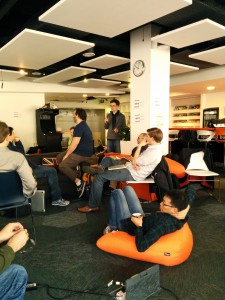I’d like to comment Paul Saab’s presentation from the other day at the World IPv6 Congress titled “The Road To IPv6 – Bumpy“. Paul works for Facebook and in his talk he apparently mentioned curl (slide 24 of the PDF set).
Lots of my friends have since directed my attention to those slides and asked for my comment. I haven’t seen Paul’s actual presentation, only read the slides, but I have had a shorter twitter conversation with him about what he meant with his words.
The slide in question says exactly this:
Curl
- Very hostile to the format of the IPv6 address
- Wants everything bracket enclosed
- Many IPv6 bugs that only recently were fixed
Let’s see what those mean. Very hostile to the format of the IPv6 address and Wants everything bracket enclosed are basically the same thing.
Paul makes a big point about the fact that if you want to write a URL with an IP address instead of a host name, you have to put that IP address within [brackets] when the IP address is an IPv6 one, which you don’t do if it is an IPv4 one.
Right. Sure. You do. That’s certainly an obstacle when converting slightly naive applications from IPv4 to IPv6 environments. This syntax is mandated by RFCs and standards (RFC3986 to be exact). curl follows the standards and you’ll do it the same way in other tools and clients that use URLs. The problem manifests itself if you use curl for your task, but if you’d use something else instead that something else would have the same issue if it follows the standards. The reason for the brackets requirements is of course that IPv6 numerical addresses contain colons and colons already have a reserved meaning in the host part of URLs so they had to come up with some way to handle that.
Then finally, Many IPv6 bugs that only recently were fixed he said.
I’m the main developer and maintainer of the curl project. This is news to me. Sure we always fix bugs and we always find stupid things we fix so there’s no doubt about that we’ve had IPv6 related bugs that we’ve fixed – and that we still have IPv6 related bugs we haven’t yet found – but saying that we fixed many such bugs recently? That isn’t something I’m aware of. My guess is that he’s talking about hiccups we’ve had after introducing happy eyeballs, a change we introduced in release 7.34.0 in December 2013.
curl has had IPv6 support since January 2001. We’re on that bumpy road to IPv6!







